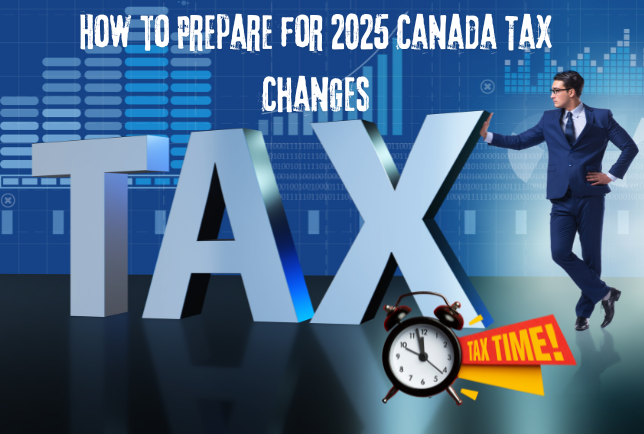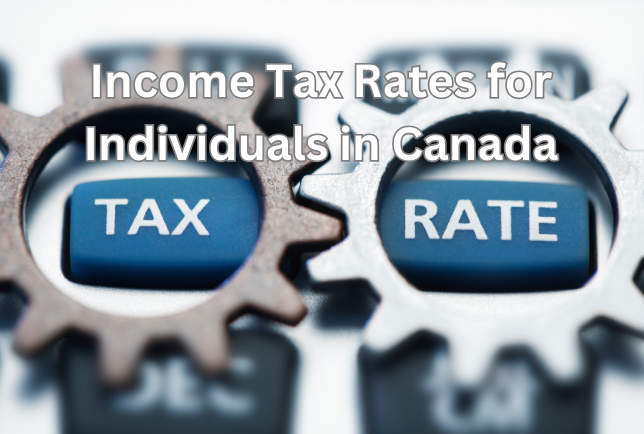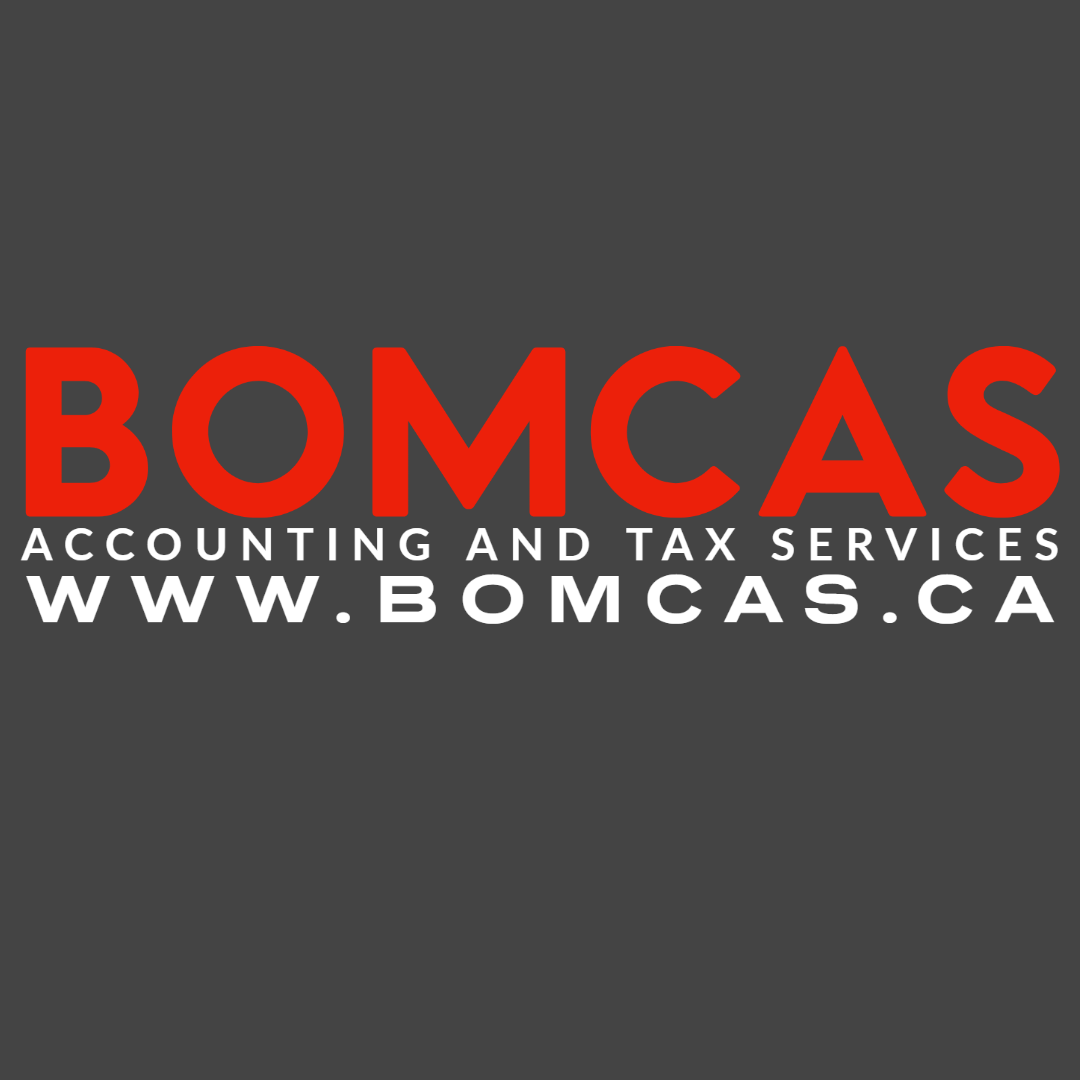Canadian taxpayers will see a major jump in capital gains tax from 50% to 67% for gains above $250,000 starting January 2026.
The news isn’t all gloomy because the 2025 Canada tax changes offer some relief. Taxpayers will save about $1.5 billion through a two-month tax holiday on groceries and other items. These changes will impact millions of Canadians who are planning for retirement with the new $32,490 RRSP contribution limit or preparing for updated Canada Child Benefit rates.
This detailed guide will help you understand these key tax changes and save thousands of dollars. You’ll learn everything from the new tax brackets to getting the most from the SimpleFile system that has already helped Canadians receive $3 billion in benefits.

Key Tax Changes Coming in 2025
Canadian taxes are going through major changes in 2025, and with good reason too. These updates affect capital gains, GST/HST rules, and benefits programs. Here’s a detailed look at what’s changing.
Capital Gains Tax Updates
The federal government announced a transformation in capital gains taxation. The inclusion rate will rise from one-half to two-thirds on capital gains above CAD 348,340.05 yearly if you have gains after January 1, 2026. This change will impact all capital gains that corporations and most types of trusts realize.
Middle-class Canadians still have protection through several exemptions. The Principal Residence Exemption stays in place, which means homeowners won’t pay capital gains taxes when they sell their main home. The Lifetime Capital Gains Exemption also increases to CAD 1.74 million from CAD 1,416,818.81 for small business shares and farming property sales.
New GST/HST Rules
Canadians will get tax relief through a GST/HST holiday. Businesses must not charge GST/HST on qualifying goods between December 14, 2024, and February 15, 2025. This temporary break applies to everyone in the supply chain, from manufacturers to consumers. The tax break includes:
- Essential groceries and prepared foods
- Restaurant meals and snacks
- Children’s clothing and footwear
- Books and print newspapers
- Holiday items like Christmas trees
The Canada Revenue Agency takes a practical stance on compliance. They focus on cases where businesses refuse to comply or collect GST/HST without sending it in.
Changes to Benefits Programs
The Canada Pension Plan brings substantial changes in 2025. New child’s benefits will provide CAD 210.24 monthly to part-time students aged 18-24 who are children of disabled or deceased contributors. The death benefit improves too – estates of CPP contributors will receive a top-up of CAD 3,483.40, making the total CAD 6,966.80 when there’s no spouse or common-law partner.
The Year’s Maximum Pensionable Earnings (YMPE) grows to CAD 99,346.58. The Year’s Additional Maximum Pensionable Earnings (YAMPE) then reaches CAD 113,140.85, about 14% above the YMPE.
Bomcas Canada’s accountants are a great way to get help understanding these changes and getting the most from your tax benefits.
How to Calculate Your New Tax Burden
Let’s explore how the 2025 tax changes will affect your tax burden through regular income tax and capital gains calculations.
Using the Updated Tax Brackets
The federal income tax brackets will see a 2.7% increase in 2025. Here’s a breakdown of what you’ll pay:
| Income Range (CAD) | Tax Rate |
|---|---|
| 0 – 79,944.04 | 15% |
| 79,945.43 – 159,888.08 | 20.5% |
| 159,889.48 – 247,853.70 | 26% |
| 247,855.09 – 353,096.98 | 29% |
| Above 353,098.38 | 33% |
Your taxable income depends on various deductions and credits. The good news is that you’ll pay less tax if your income stays the same as 2024, thanks to higher bracket thresholds.
Estimating Capital Gains Tax
The 2025 changes have made capital gains calculations more complex. Here’s the simple formula:
Capital gain/loss = Proceeds of disposition – (Adjusted cost base + Outlays and expenses)
Your capital gains tax depends on three key components:
- Proceeds of disposition: What you earn from selling your asset
- Adjusted cost base (ACB): The purchase price plus improvements
- Outlays and expenses: Sale-related costs like legal fees or commissions
Starting June 25, 2024, the inclusion rate changes by a lot:
- Gains up to CAD 348,340.05 keep the 50% inclusion rate
- Gains above CAD 348,340.05 face a two-thirds (66%) inclusion rate
To name just one example, see a CAD 400,000 profit from selling an investment property. The first CAD 348,340.05 would be taxed at 50% inclusion, while the remaining CAD 51,659.95 would face the 66% rate.
Smart timing of asset sales is vital. You might want to spread large-gain sales across multiple tax years. This approach could help lower your tax burden under the new rules.
Bomcas Canada’s accountants are a great way to get expert guidance. They can help you understand your specific tax situation and find potential savings.
Smart Ways to Reduce Your 2025 Taxes
Smart tax planning helps you find new ways to reduce your 2025 tax burden. Here are some proven ways to save more money.
Maximizing RRSP Contributions
The RRSP contribution limit goes up to CAD 45,270.27 for 2025. You can use this maximum if your 2024 income was CAD 251,501.52 or higher.
Here’s how to get the most from your RRSP:
- Start contributing early instead of waiting for the deadline
- Set up monthly automatic contributions
- Take advantage of unused room from past years
- Look into spousal RRSP options to split income
You have until March 3, 2025, to make contributions that count toward your 2024 tax return. This gives you flexibility to plan your taxes over multiple years.
Taking Advantage of the GST Holiday
The GST/HST holiday from December 14, 2024, to February 15, 2025 gives you a great chance to save money. Your qualifying purchases become tax-free automatically at checkout.
These items qualify for tax-free status:
- Restaurant meals and takeout
- Children’s clothing and footwear
- Books and printed newspapers
- Holiday decorations and Christmas trees
- Prepared foods and snacks
Smart timing of your major purchases during this period could save you money. If a seller charges you GST/HST by mistake during this time, keep your receipt and ask for a refund.
Investment Strategies Before Rate Changes
Tax changes on capital gains make smart investment planning vital now. Here are some ways to reduce your taxes:
Canadian dividend stocks work well in non-registered accounts because of the Dividend Tax Credit. U.S. dividend stocks make more sense in RRSPs since you won’t pay withholding tax in these accounts.
Large capital gains need careful timing. You might want to spread big asset sales across different tax years to pay less when rates go up. The TFSA limit also rises to CAD 9,753.52 in 2025, giving you another tax-free investment option.
Bomcas Canada’s accountants can help you put these strategies to work and stay compliant with new tax rules.
Important Deadlines to Remember
Tracking significant tax deadlines will help you get maximum benefits and avoid penalties in the upcoming tax season. Here are the key dates you should mark on your calendar.
Tax Filing Calendar
Individual taxpayers must file their 2024 tax returns by April 30, 2025. Self-employed individuals have until June 16, 2025 to submit their returns. All the same, every taxpayer must pay any taxes owed by April 30, 2025 to avoid interest charges.
Business and corporation filing deadlines depend on their structure:
| Entity Type | Filing Deadline |
|---|---|
| Corporations | 6 months after fiscal year end |
| GST/HST Monthly | End of following month |
| GST/HST Quarterly | One month after period end |
| GST/HST Annual | Three months after fiscal year |
Quarterly tax installment payments for 2025 are due on:
- March 17, 2025
- June 16, 2025
- September 15, 2025
- December 15, 2025
Contribution Cut-off Dates
The RRSP contribution deadline for the 2024 tax year is March 3, 2025. You can claim deductions on your 2024 tax return. The maximum RRSP contribution room for 2025 goes up to CAD 45,270.27.
Here are other important contribution deadlines:
The TFSA contribution limit starts on January 1, 2025, with the new limit at CAD 9,753.52. February 28, 2025, is the last day to claim charitable donations for the 2024 tax year.
First Home Savings Account (FHSA) holders must complete these tasks by December 31, 2025:
- Make contributions for the 2025 tax year
- Convert your RRSP if you turn 71
- Close your FHSA if you turn 71
People earning farming or fishing income must complete tax installment payments by December 31st to avoid interest charges. The deadline for Registered Education Savings Plan (RESP) and Registered Disability Savings Plan (RDSP) contributions that qualify for government grants is December 31, 2025.
Bomcas Canada’s accountants are a great way to get expert help with meeting these deadlines and maximizing your tax benefits. They can help you manage your tax obligations effectively.
Organizing Your Tax Documents
Tax documents’ proper organization creates the foundations of successful tax filing and compliance. The Canada Revenue Agency (CRA) manages to keep specific record-keeping requirements that every taxpayer must follow.
Everything in Records to Keep
The CRA wants taxpayers to keep their records for six years from the end of the last tax year they relate to. We stored these documents at your residence or place of business in Canada, though exceptions exist with written CRA permission.
The core team documents to keep include:
| Document Type | Purpose |
|---|---|
| Tax Returns | Previous filings and assessments |
| Financial Records | Income and expense tracking |
| Receipts | Support for claimed deductions |
| Benefits Documentation | Program eligibility proof |
| Investment Records | Capital gains calculations |
These records must be kept indefinitely when you have long-term acquisitions or property disposal. Records for dissolved corporations need to be kept two years beyond the dissolution date.
Digital Storage Options
The CRA accepts records of all types as it adapts to modern technology. Records can be kept in:
- Paper format
- Converted electronic format
- Original electronic format
Electronic storage comes with specific requirements. Electronic images must be exact copies of original documents. The images should:
- Have the same information as paper documents
- Keep important details without resolution limits
- Meet national standards for electronic scanning
Of course, security is crucial for digital storage. The CRA recommends you:
- Create backup copies of all business information stored on rewritable media
- Store media where there are no hazards like magnetic fields and moisture
- Follow manufacturer guidelines for media shelf life
Cloud storage solutions offer extra benefits. Local storage needs careful management of backup procedures and environmental controls. Whatever storage method you choose, files must be available to CRA officials upon request.
Bomcas Canada’s accountants provide expert help to keep your tax records in order and compliant.
Understanding New Tax Credits
Canada’s benefit landscape will see major changes in 2025 with new tax credits that offer better support to people at different income levels and family situations.
Available Credits for 2025
The Canada Child Benefit will adjust its maximum annual payments to CAD 10,850.10 per child under 6 and CAD 9,154.385 per child aged 6-17. The GST/HST credit now gives quarterly support, with singles getting up to CAD 723.15 yearly and couples getting CAD 947.48.
The Working Canadians Rebate adds new support that helps people who earned up to CAD 209,004.03 in 2023. Eligible people will receive CAD 348.34 in spring 2025.
Here’s a detailed table of the most important credits:
| Credit Type | Maximum Amount (CAD) |
|---|---|
| Disability Tax Credit | 13,755.25 |
| Child Disability Supplement | 8,022.97 |
| Canada Workers Benefit (Singles) | 2,215.44 |
| Canada Workers Benefit (Families) | 3,816.41 |
Canadian entrepreneurs can now benefit from a reduced inclusion rate that drops from two-thirds to one-third on capital gains, with a lifetime maximum of CAD 2.79 million. This program will roll out over five years starting 2025, at CAD 557,344.08 each year.
Qualification Requirements
You need to pay close attention to specific conditions to qualify. The solidarity tax credit needs you to:
- Be 18 or older (with exceptions if you:
- Have a spouse
- Are parents living with their child
- Are recognized as emancipated minors)
The Canada Workers Benefit has clear income limits:
- Singles must earn no more than CAD 36,434.98
- Families must earn no more than CAD 41,568.11
Alberta residents might see their tax rate drop to 9% on taxable income below CAD 83,601.61 by 2026. British Columbia residents can get the Climate Action Tax Credit by just living in the province and filing annual taxes.
The Canadian Dental Care Plan now covers people without private insurance who have adjusted family income below CAD 125,402.42. This benefit includes basic dental services like cleanings, x-rays, fillings, and root canals.
Bomcas Canada’s accountants can help you get the most out of these credits and make sure you qualify.
Step-by-Step Filing Guide
The Canada Revenue Agency’s expanded digital services and multiple submission options make filing your 2025 tax return easier. Here’s a look at each method to help you pick the best one for your needs.
Using CRA’s New Auto-Filing System
The SimpleFile system is a major step forward in tax filing convenience that serves over 2 million Canadians. The service started on February 24, 2025, and runs 20 hours each day from 6 AM to 3 AM Eastern time.
SimpleFile gives you three options:
| Filing Method | Time Required | Key Feature |
|---|---|---|
| SimpleFile by Phone | 5-10 minutes | PIN-based refund estimates |
| SimpleFile Digital | Under 20 minutes | Online platform access |
| SimpleFile by Paper | Variable | Tax-exempt income reporting |
These services helped Canadians get substantial benefits in 2024:
- CAD 1.95 billion in Canada Child Benefit payments
- CAD 160.24 million in Canada Workers Benefit payments
- CAD 682.75 million in GST/HST credit payments
Manual Filing Options
NETFILE service opens on February 19, 2025. You should register for a CRA My Account to download income slips, RRSP receipts, and carryforward amounts automatically. Next, pick NETFILE-certified tax software that gives you:
- Step-by-step guidance
- Access to answers and help
- Data protection and security
- Time-saving features
Paper filing remains an option. CRA mails tax packages to people who need extra support and filed paper returns before. Electronic filing processes returns faster – usually within two weeks, while paper returns take eight weeks.
Getting Professional Help
Tax preparation experts can be invaluable if you have complex tax situations. These authorized tax preparers must:
- Register with CRA for EFILE certification
- Pass suitability screening
- Use EFILE certified software
- Sign as preparer on returns
Professional help brings several benefits:
- Expert navigation of tax laws
- Minimized errors
- Better financial outcomes
Free tax clinics operate both in-person and online to help people with modest incomes. Community volunteers at these clinics provide quality assistance while following professional guidelines.
The Auto-fill my return service makes the process smoother for everyone. This secure digital tool puts information CRA already has directly into your tax return. It cuts down on manual entry errors and saves time.
Bomcas Canada’s accountants can help you choose the right filing method and maximize your tax benefits based on your specific needs.
Common Mistakes to Avoid
Tax filing mistakes can cost you money and cause unnecessary stress. Canadian taxpayers need to stay alert as tax rules keep changing.
Calculation Errors
Tax returns with manual calculations often result in expensive mistakes. The Canada Revenue Agency (CRA) shows that calculation errors might trigger reassessments, hold up your refunds, or start an audit.
You’ll find these common calculation mistakes:
- Wrong reporting of income from multiple sources
- Incorrect expense deductions
- Errors in capital gains computations
- Inaccurate GST/HST calculations
- Data entry mistakes in Social Insurance Numbers (SIN)
These errors could make the CRA deny your claimed expenses and hit you with unexpected tax bills. CRA-certified tax software helps minimize calculation mistakes. Take time to double-check all entries, especially your income amounts and identification details.
Missing Deadlines
Late filing comes with heavy penalties that grow over time. The CRA charges a 5% penalty on any balance owing, plus 1% each month your return is late, up to 12 months. Repeat offenders face even tougher consequences – 10% of the balance owing plus 2% monthly for up to 20 months.
Here’s how penalties break down:
| Scenario | Initial Penalty | Monthly Addition | Maximum Period |
|---|---|---|---|
| First Time | 5% | 1% | 12 months |
| Repeat Offender | 10% | 2% | 20 months |
Late filing hurts more than your finances. Your benefit payments might stop, including the Canada Child Benefit or GST/HST credits. File on time even if you can’t pay the full amount – this way you’ll avoid these penalties.
Documentation Issues
Good documentation makes accurate tax filing possible. The CRA wants you to keep records for six years after the end of your last tax year. Poor documentation creates several problems:
Invalid claims happen because of:
- Missing transit pass details
- Incomplete charitable donation receipts
- Improper medical expense documentation
- Unproven business expenses
The CRA might ask for extra proof beyond official receipts, such as canceled checks or bank statements. Self-employed people face extra scrutiny about their business expenses, especially for:
- Vehicle usage claims
- Home office deductions
- Travel expenses
- Meal costs
Self-employed people earning over CAD 41,800.81 yearly must have proper GST/HST documentation. Missing or incomplete records can lead to penalties and compliance reviews.
Digital record-keeping solves many documentation challenges. The CRA accepts electronic records that accurately show original documents. Digital copies also make it easy to access your records during CRA reviews or audits.
Bomcas Canada’s accountants are ready to help you avoid these common mistakes and file accurately. Their expertise will help prevent calculation errors, meet deadlines, and keep proper documentation throughout the tax year.
Conclusion
Canadian taxpayers will face significant changes in 2025 with new capital gains rates, GST/HST rules, and benefits programs. These updates can help you save money while meeting all compliance requirements.
Your tax preparation should begin with document organization, deadline tracking, and identifying new tax credits. Early planning gives you the flexibility to distribute capital gains across tax years and optimize your RRSP contributions.
BOMCAS Canada’s expert accountants can help with your tax planning needs. Their team will direct you through these changes, prevent costly errors, and maximize your eligible deductions and credits.
Smart tax planning depends on staying current with updates and keeping proper records year-round. The strategies shared here will help you handle the 2025 tax changes effectively and save substantial money.
FAQs
Q1. How will the capital gains tax change in Canada for 2025? The capital gains inclusion rate will increase from 50% to 66% for gains above CAD 348,340.05 annually, starting January 1, 2026. This change applies to individuals, corporations, and most trusts.
Q2. What is the GST/HST holiday planned for 2025? A GST/HST holiday is scheduled from December 14, 2024, to February 15, 2025. During this period, businesses should not charge GST/HST on qualifying goods, including essential groceries, prepared foods, restaurant meals, children’s clothing, and books.
Q3. What are the key deadlines for filing 2024 tax returns in 2025? Individual taxpayers must file their 2024 tax returns by April 30, 2025. Self-employed individuals have until June 16, 2025, to submit their returns, but all taxes owed must be paid by April 30, 2025, to avoid interest charges.
Q4. How can I reduce my 2025 taxes? You can reduce your 2025 taxes by maximizing RRSP contributions (limit increased to CAD 45,270.27), taking advantage of the GST holiday for major purchases, and strategically timing investment sales to minimize exposure to higher capital gains inclusion rates.
Q5. What new tax credits are available for 2025? New tax credits for 2025 include increased Canada Child Benefit payments, enhanced GST/HST credits, and the introduction of the Working Canadians Rebate. The Canadian Entrepreneurs’ Incentive also offers a reduced inclusion rate on capital gains for eligible individuals.














 View Our Location
View Our Location





 181 Meadowview Bay, Sherwood Park, AB T8H 1P7, Canada (Online Clients Only)
181 Meadowview Bay, Sherwood Park, AB T8H 1P7, Canada (Online Clients Only)